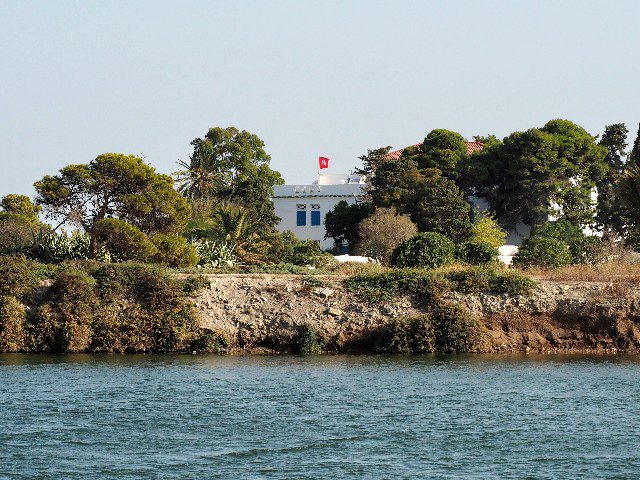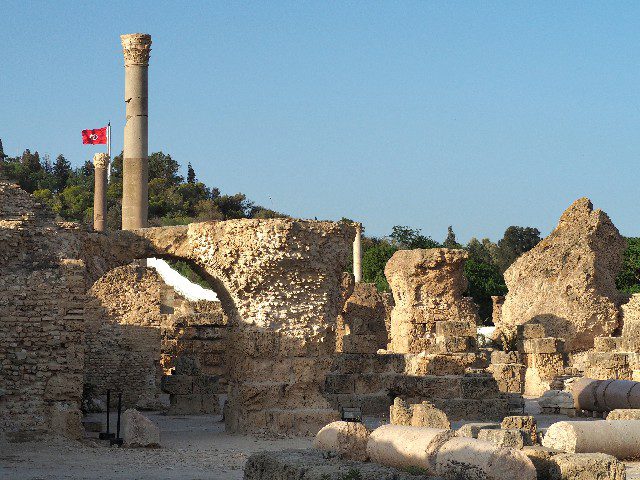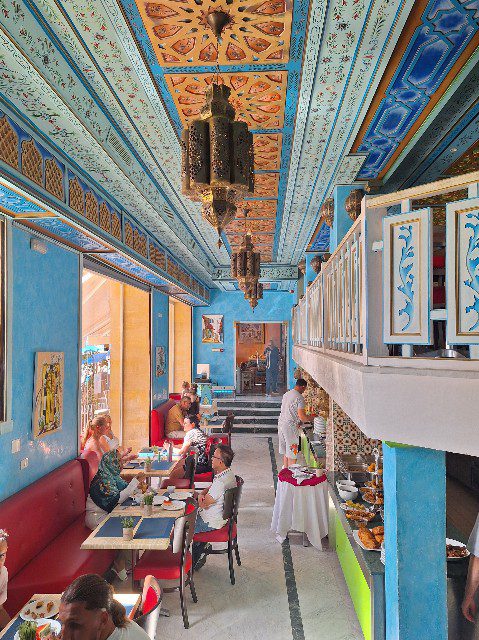
The distinctive blue and white color scheme unique to Tunisia
Tunisia is a beautiful country located in North Africa, facing the Mediterranean Sea. Among its attractions, Sidi Bou Said, situated near the capital Tunis, draws tourists from around the world with its distinctive blue and white townscape.
This characteristic color scheme can actually be seen throughout Tunis city and its old town (Medina). Even within Tunis itself, which isn’t as touristy as Sidi Bou Said, you can find beautiful streetscapes where blue and white colors harmonize.
Interestingly, these colors and decorations aren’t just aesthetically pleasing; they serve practical purposes and hold deep cultural meanings. In this article, we’ll focus on the blue townscape and the patterns adorning doorways, exploring their background.
The Secret Behind the Blue and White Colors

Sidi Bou Said is famous as a beautiful town unified by white walls and vibrant blue window frames and doors. While this blue and white color scheme is said to have been popularized by French musician Rodolphe d’Erlanger, it has not only visual beauty but also practical aspects.
The white walls reflect the strong Mediterranean sunlight, helping to maintain coolness, while blue is believed to have insect-repelling properties, particularly against mosquitoes. When I asked a young tout I met in the Medina, he told me, “Blue keeps mosquitoes away.” This aligns with my own experience – I wasn’t bitten by a single mosquito during my stay in Tunisia, which might be due to this effect.
Blue and White Combinations Throughout Tunis

Tunisian colors that match perfectly with the azure Mediterranean Sea
When visiting Tunisia, you’ll notice that the blue and white color scheme is widely used even in downtown Tunis, which isn’t as touristy as Sidi Bou Said. Particularly in the old town Medina, many buildings feature white walls with striking blue doors and windows, creating a beautiful Mediterranean landscape. These colors reflect not just aesthetic beauty but also the wisdom and culture embedded in residents’ daily lives. Perhaps due to this effect, even in Tunis’s summer heat exceeding 40°C (104°F), I found it more comfortable than hot, humid summers elsewhere, and was able to enjoy my time without being bothered by mosquitoes or flies.
Beyond visual appeal and practicality, the blue and white combination also offers psychological benefits. Blue evokes calmness and coolness, while white symbolizes cleanliness and spaciousness – important elements in hot regions. Perhaps these are the reasons why blue and white are chosen in Tunis’s townscape, creating a unified feel throughout the city.
The Meaning Behind Patterns on Tunisian Doors
Beyond the blue and white color scheme, Tunisian doors often feature distinctive patterns. Particularly eye-catching is the “Hamsa,” a five-fingered symbol believed to ward off evil, protecting homes from the evil eye and malevolent spirits.
Fish, eyes, and moon patterns are also carved into doors and window frames, believed to “prevent envy” and “ward off malice.” Thus, door designs aren’t merely decorative but embody prayers for the peaceful lives of inhabitants.

Looking closely, you can see many motifs designed to ward off the evil eye
Protection against the evil eye is a common concept in Islamic regions, with Turkey’s blue eye ornament “Nazar Boncuğu” being a famous example. Tunisia’s Hamsa shares a similar concept and is used not only in door designs but also as motifs for amulets and accessories.

Nazar Boncuğu can also be found in Tunisia. Having once been under Ottoman rule, Tunisia features many elements of Turkish culture, including Nazar Boncuğu and hammams (Turkish baths).
What Do You Think?
The blue and white townscapes and patterns decorating doors in Tunis are closely related not just to tourist appeal but also to the culture, history, and daily lives of local people. Discovering such beauty not only in famous spots like Sidi Bou Said but also in downtown Tunis and the Medina enhances the pleasure of travel.
Understanding the meanings behind the blue and white color scheme and the patterns on doors will enrich your experience of Tunisia’s townscapes, making your journey even more special. When exploring Tunis, remember what we’ve discussed and pay attention to the colors and patterns of the town.





